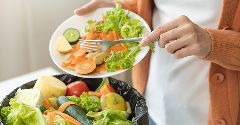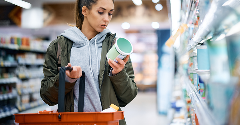How Do Consumers Decide to Take Omega-3s?
20 Aug 2013Omega-3 supplements have continued to gain in popularity, and in most of the world, awareness that omega-3s are good for you is almost universal (see the figure on the left). Yet while consumers may be familiar with omega-3s, they do not necessarily understand why omega-3s are good for them, and they cannot say how much […]

 Omega-3 supplements have continued to gain in popularity, and in most of the world, awareness that omega-3s are good for you is almost universal (see the figure on the left).
Omega-3 supplements have continued to gain in popularity, and in most of the world, awareness that omega-3s are good for you is almost universal (see the figure on the left).
Yet while consumers may be familiar with omega-3s, they do not necessarily understand why omega-3s are good for them, and they cannot say how much omega-3s they should be taking. Likewise, when you look at where various consumers go to get information on omega-3s, there are wide variations.
In all the countries GOED has surveyed, the doctor or pharmacist is the first or second source of health information. In Germany, for example, 47% of consumers look to a health practitioner for advice, while in the U.K. the number is 62%.
France tops the charts with almost 70% of consumers reporting that a doctor or pharmacist is their number one source of information.
The interesting comparison comes when you look at the second choice. In most countries, it’s friends and family. This holds true in France and the U.K., but in Germany, a higher percentage (28%) go to the Internet for health information, while 20% talk to friends and family. Even in the U.K., friends and family only edges out the Internet by a very slim margin (19% compared to 16%).
As a point of comparison, both the U.S. and China rank the Internet higher than friends and family, although in both countries, doctors and pharmacists still came in first.
When you look at the factors that actually influence a purchasing decision, not surprisingly, doctor recommendations continue to lead the way. In France, almost 75% say this is their main influencer when making a purchasing decision. Quality is the second highest factor at more than 65%.
In the U.K., similarly, doctors rank first, with 58% of consumers saying they are influenced by health practitioner advice, followed by quality at 54%. Here, too, Germany is a bit different, with quality as an influencer having the higher percentage at 59%, followed by doctors at 51% and price a strong third with 42%. For comparison’s sake, in the U.S. and China, doctor recommendations were about even with quality as the primary influencer of purchase decisions.
Across all countries — Germany, France, U.K., U.S. and China — the lowest ranking factors were taste and sustainability concerns. The latter is interesting given all the talk in the media about sustainability and how much consumers are concerned about the issue.
Related news

Plastic packaging reduction requires industry rethink
6 Jan 2023
The food and beverage sector is calling for industry-wide collaboration and business model updates to reduce the environmental impact of plastic packaging.
Read more
Misleading nutrition claims mask true sugar levels in baby food
5 Jan 2023
Some baby and toddler food and drink products, sweetened with fruit concentrate, contain up to four teaspoons of sugar per serving yet are marketed as having ‘no added sugar’, according to a survey by Action on Sugar.
Read more
Asian beverage brands deal with rising costs
4 Jan 2023
Decreasing bottle sizes or increasing prices? Asian beverage brands are finding “creative approaches” to manage rising costs, according to industry analysts.
Read more
Preserving the freshness of food to fight waste
3 Jan 2023
Several companies are producing products that absorb ethylene, the hormone that causes food to ripen, in attempt to reduce food waste.
Read more
Value-seeking US consumers cut back on food spending
2 Jan 2023
Cheaper items, smaller sizes, and shorter grocery lists: inflationary effects coupled with a global long-term recession are set to continue shaping food spending habits, according to a recent Rabobank report.
Read more
Opportunities grow for lower-caffeine coffee
23 Dec 2022
Many consumers want the mental focus of caffeine without the jitters, prompting a wave of product development such as “half caffeine” ground coffee or ready-to-drink (RTD) cold brew blended with relaxing botanicals.
Read more
Superfrau upcycles liquid whey for energy drinks
22 Dec 2022
US company Superfrau turns surplus whey into sustainable, upcycled-certified dairy products for the recovery drinks market.
Read more
Malaysian brand Nanka brings jackfruit range to Europe
21 Dec 2022
Malaysian brand Nanka is expanding to new Asian and European markets with its fast and ready-to-eat plant-based products based on jackfruit.
Read more
Is the UK on target to meet its 2025 Plastics Pact?
20 Dec 2022
Major food industry players, including Arla, Kerry, PepsiCo and TerraCycle, have signed the UK’s voluntary Plastic Pact to reduce plastic from the supply chain – but are they on track to meet their targets?
Read more
Chinese food brand wants to give customers ‘the full experience’
16 Dec 2022
Food brand Xiao Chi Jie is revamping Chinese cuisine for the modern American consumer. The Washington-based company sells regional Chinese specialties like soup dumplings, noodle kits, and barbeque skewers direct-to-consumer in the US.
Read more